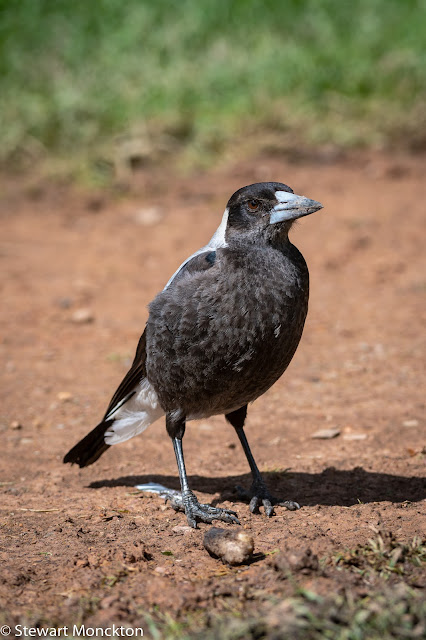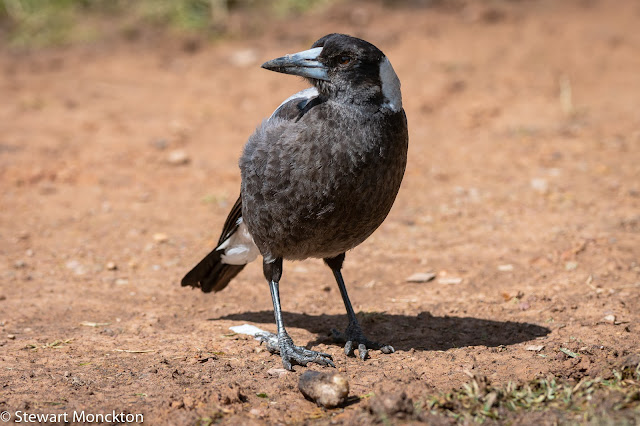Wednesday, 30 November 2022
Wild Bird Wednesday 540 - Australian Magpie
Wednesday, 23 November 2022
Wild Bird Wednesday 539 - Lord Howe Woodhen
I mentioned the Lord Howe Woodhen (Gallirallus sylvestris) in last week's post, so I thought I would share some pictures of this species.
Lord Howe Island is about 780 km northeast of Sydney, in the Tasman Sea between Australia and New Zealand. As with many isolated islands it has a number of endemic species, and as with many other island endemics extinction in the modern age is a bit of a problem.
The Woodhen population on LHI fell to about 30 birds at one stage, but has now recovered to over 200. In recent years many of the birds were removed from the island as a huge rat baiting program took place. The rat eradication seems to have been (more or less) successful and the birds have been returned.
Although it is isolated (and expensive) if you ever get the chance to go to LHI, take it: its a wonderful place.
It's remarkable to think that about 1% of the worlds population of these birds are in these pictures!
To join in with WBW, click the link below. SM
You are invited to the Inlinkz link party!
Click here to enterWednesday, 16 November 2022
Wild Bird Wednesday 538 - Weka
The Weka (Gallirallus australis) is an endemic, flightless rail from New Zealand. The bird is about 50cm long and weighs in between 700 and 1000g - in other words it's about the same size as a small chicken.
Those of you with good memories may recall that I posted some images of Woodhen from Lord Howe Island in the past. Woodhen and Weka are in the same genus and have both become flightless. I say 'become' because both species of birds are found on remote (ish) island and it's sure that the ancestors of these birds did not swim to these islands!
These pictures are of two different birds and I suspect that they are examples of two of the four 'types' found in NZ. The first bird seems to be one of the 'buff' forms - its does seem rather more 'ginger' than the darker bird, which may be the 'western' form.
In any case the first bird was very inquisitive and walked up to and past us without much bother. I would have liked to get a bit lower for some of the shots of that bird, but we were half way though a walk and things were a little damp underfoot! It's why I normally wear (or carry) a coat of some form!
You are invited to the Inlinkz link party!
Click here to enterWednesday, 9 November 2022
Wild Bird Wednesday 537 - White Terns
You are invited to the Inlinkz link party!
Click here to enterWednesday, 2 November 2022
Wild Bird Wednesday 536 - Australian White Ibis
You are invited to the Inlinkz link party!
Click here to enter






































